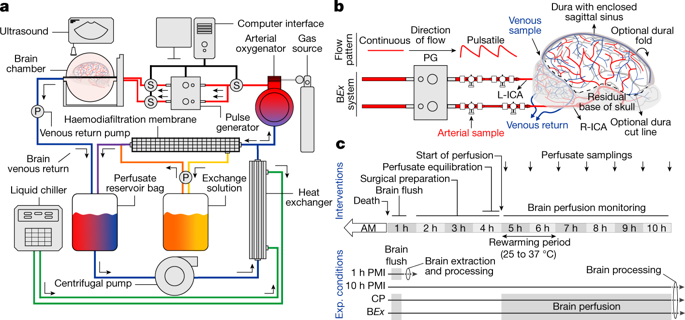Scientists Revive Pig Brains
A diagram of the mechanism used to restore the pig brains.
By definition, death occurs when blood circulation stops and the respiratory system is shut down. There have been cases of course, where people a”come back” to life after being shocked by defibrillators. But what if there was another way to revive a dead person or even an organism? No, I’m not talking about necromancy.
In a shocking success, Yale Professor Nenad Sestan and his team were able to restore circulation and cellular activity to parts of pig brains hours after the pigs had died. While some brain cells take hours to permanently shut down, brain functions that were thought to cease within minutes were also able to be restored. It’s also important to note that even if the brain was cellularly active and had circulation, there was no sense of perception or consciousness observed in the brains. However, that was to be expected as “Restoration of consciousness was never a goal of this research”. There’s would also be an ethical problem had that been the goal, as a bodiless brain regaining consciousness would be considered a cruel fate. Instead, the goal of the project was to be able to study the functions of the brain as a whole, which would be much more accurate than tiny pieces of tissue on Petri dishes.
The entire experiment spanned over a length of six hours. The team used a complicated looking mechanism that came straight out of a dystopian sci-fi movie to pump a carefully prepared mixture of chemicals, including the anti-seizure drug lamotrigine, into the brains. The mixture lacked many natural components found in blood, but then again, the goal was not for the brains to regain consciousness.
As experiments like these start appearing more frequently, the medical field is set for a bright and even more fastly advancing future. Moral and ethical standards will continue to be a factor, but carefully monitored and well-intentioned projects can benefit all sides in the long run.

Lyla Boretz is a 13-year-old student with a passion for music and sports. She's played the violin for 5 years, figure skated for two, and did English riding...























